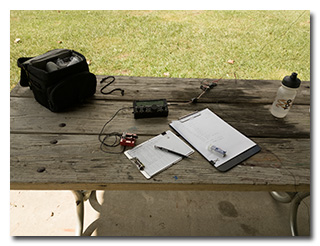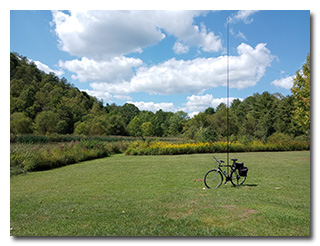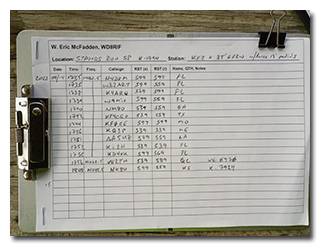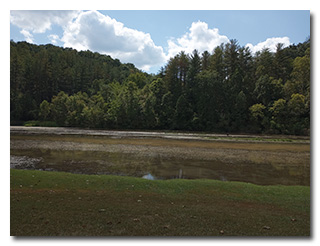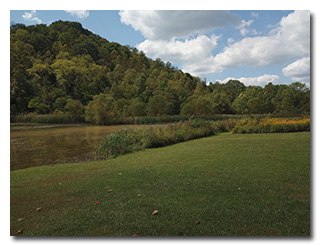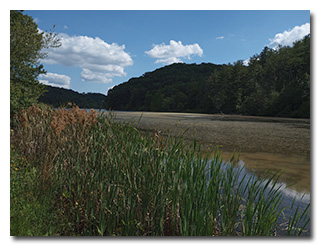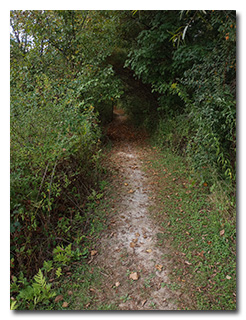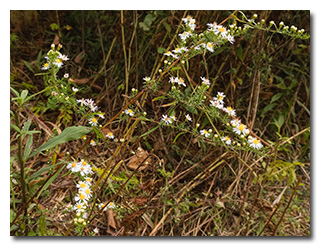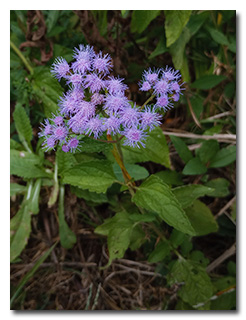
by William Eric McFadden
From the Strouds Run State Park website:
-
Strouds Run State Park is located in the scenic forested hills of Athens County, in the midst of the unglaciated Appalachian Plateau. Although untouched by the vast ice sheets that moved across portions of the state over 12,000 years ago, Strouds Run displays the effects of the glaciers -- in the deep ravines and high hills -- where the valleys served as outlets for torrents of glacial meltwaters. The erosive power of these waters carved the valleys and hillsides, creating the familiar topography Ohioans know today. Large deposits of glacial outwash, primarily sand and gravel, were deposited along these streams and strongly affected the type of biological communities present today.
Sandstone, the principal bedrock outcropping in the region, is very resistant to erosion and forms the uplands and steep sides of the valleys. Twisting roads and forest trails pass through these deep ravines and lead to dense stands of beech, hickory, oak, maple and tuliptree. Seasonal displays are offered by flowering dogwood, redbud and spring wildflowers -- with fall presenting a pageant of colorful foliage. These woods are home to white-tailed deer, fox, raccoon, opossum, squirrel, wild turkey and a variety of songbirds. Woodthrush, white-breasted nuthatch, scarlet tanager, pileated woodpecker and the rufous-sided towhee inhabit the forest canopy. These rugged hills and woodlands are truly reminiscent of the wilderness that characterized the Ohio country in the days of early settlers.
Pictures
Description
On the afternoon of September 14, 2023, one member of the Southeast Ohio Radio Adventure Team took advantage of beautiful not-quite-Fall weather to perform a successful bicycle-portable activation of Strouds Run State Park (K-1994) as part of the Parks on the Air (POTA; link) program.
Eric McFadden, WD8RIF, bicycled from his home to Strouds Run State Park with his small and lightweight KX2 Mini Travel Kit. Eric began his ride at 1635 UTC and arrived at Bulldog Shelter in Strouds Run State Park at 1720 UTC to find the picnic shelter to be entirely unoccupied. The smooth new pavement on Strouds Run Road was a delight to ride on, and Eric was not delayed by the flaggers controlling the one-lane traffic around the continuing work on the berms.
Eric set up his Elecraft KX2 transceiver on an available picnic table, bungied his Goture Red Fox Super Hard 720 carbon-fiber mast vertically to his bicycle, sloped the Tufteln (link) 35' EFRW antenna from the KX2 up to top of the mast, and deployed three 17' counterpoise wires directly on the ground. Eric was on the air at 1732 UTC.
As is supposed to be the case at this location, Eric had good cell-signal and would be able to spot himself on the POTA Spots website and to use POTA Spots to identify possible Park-to-Park (P2P) QSOs.
Eric began his operation on 20m. Finding himself a clear frequency, he began calling "CQ POTA" and was pleased to be quickly auto-spotted to POTA Spots. His first QSO came at 1735 UTC with N4DPM in Florida. In what turned out to be an interesting trend, Eric's next three QSOs were also with stations located in Florida. QSOs came steadily, with Eric's twelfth QSO coming at 1756 UTC with VE2TH who was activating Parc de la Plage-Jacques-Cartier Regional Park (VE-0970) in Quebec. This run included QSOs with operators in Florida (6), Ohio, Texas, Missouri, Maine, Louisiana, and Quebec.
Eric finished his operation by consulting POTA Spots for P2P QSO opportunities, and at 1803 UTC he made a P2P QSO on 20m with NK8O who was activating Council Grove State Wildlife Area (K-7924) in Kansas.
In all, Eric logged thirteen QSOs, with two P2P QSOs, in thirty-one minutes of on-air time. All of Eric's QSOs were CW and were made at five watts output.
As at his other recent bicycle-portable activations of Strouds Run State Park, the KX2 and the Tufteln 35' EFRW antenna performed very well.
Eric took some photos, tore down his station, loaded his bicycle, and began his ride home.
On the ride home, Eric was delayed by the flaggers on Strouds Run Road, but not for very long.
Eric also submitted his log to the World Wide Flora and Fauna in Amateur Radio (WWFF; link) program for an activation of Strouds Run State Park, KFF-1994.
(return)
